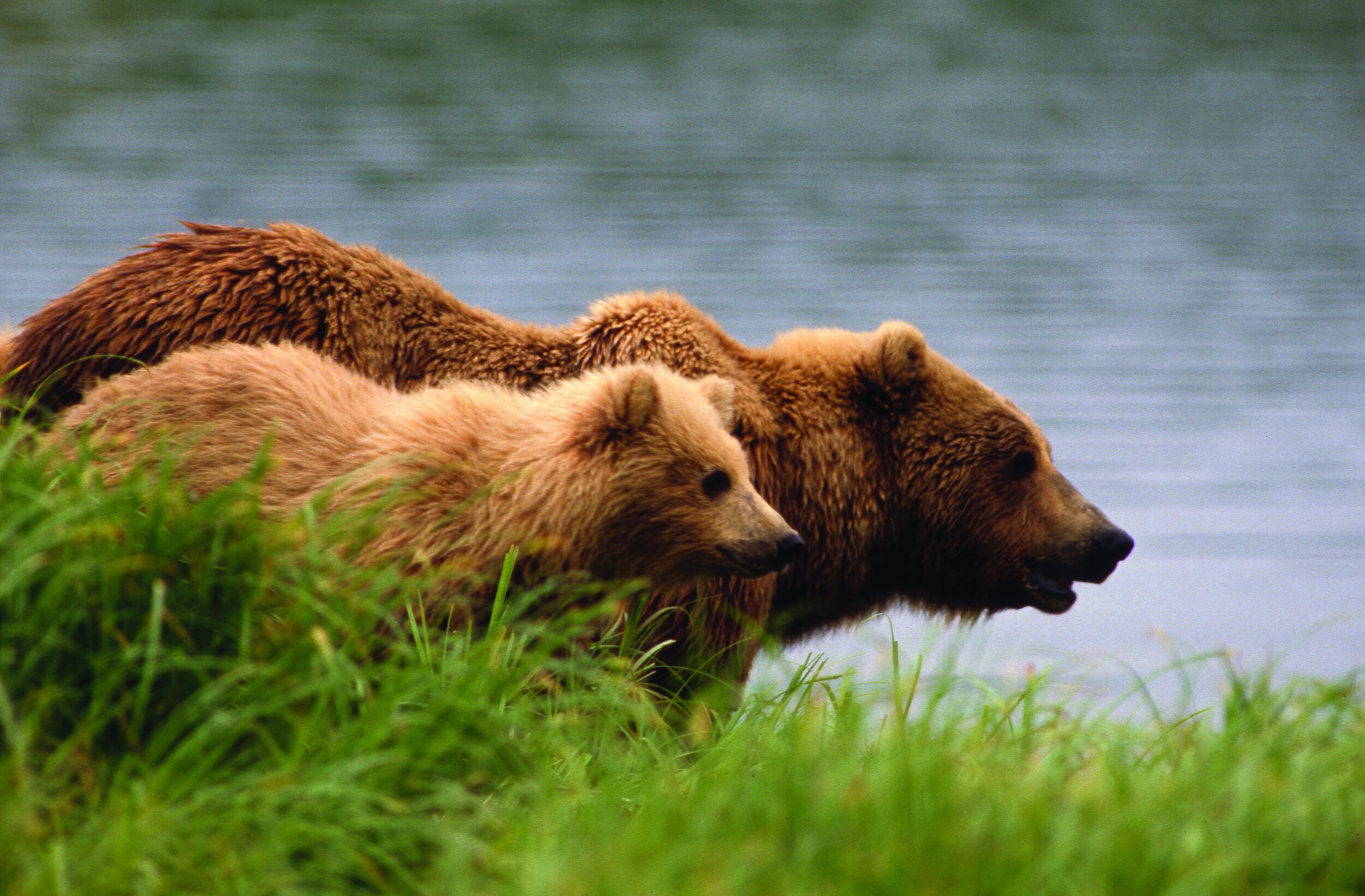AWA Board member speaking about the legal context of wildlife conservation in Alaska.
In the News: Wolves in Southeast Alaska Face Pressures From All Sides
“Wolves are a charismatic top predator that have become a symbol of wildness for the conservation movement. Aldo Leopold famously wrote about the conflict between humans and wolves in his 1948 essay, ‘Thinking Like a Mountain,’ where he reflected upon shooting a wolf. Many historians credit this essay as a milestone in the modern-day environmental movement. To this day, wolves elicit an emotional response from so many of us. Love them or hate them, wolves attract a disproportionate amount of attention.”
Publication: A RADical approach to conservation in Alaska
Climate Adaptation Workshop Report is Here!
AWA's Executive Director Wins Award
Our own Executive Director, Nicole Schmitt (center), was recently an Alaska Top Forty Under 40 winner for 2022 through the Alaska Journal of Commerce. Congrats, Nicole!
In the News: Homer’s First Marine Mammal Forum
“Brought together by the Alaska Wildlife Alliance, with the support of the U.S. Fish and Wildlife Service and Kenai Peninsula College, the three-day forum held April 18-21, the culmination of a long-term conversation about educating boaters on how to ethically enjoy seeing the marine life of Kachemak Bay.”
VICTORY! Court upholds prohibition of brown bear baiting in the Kenai Refuge
Alaska Wildlife Alliance and our coalition partners celebrated a U.S. Ninth Circuit Court of Appeals decision today that upheld a 2016 U.S. Fish & Wildlife Service rule that enshrines the Kenai National Wildlife Refuge’s long-standing prohibition on brown bear baiting, along with its decades-long approach of managing the Skilak Wildlife Recreation Area for wildlife viewing and education.
We're in Alaska’s Superior Court to protect Alexander Archipelago wolves
Approaches to Adapting to Alaska's Rapidly Warming Climate workshop videos are live!
Publication: Flight plan for the future: floatplane pilots and researchers team up to predict invasive species dispersal in Alaska
BioScience Features Resist, Accept, Direct (RAD) Framework
Our 2021 Annual Report
2020-2021 Map the Trap Report is Live!
Victory! Reducing halibut trawl bycatch in the Bering Sea
In the News: Beluga whale monitoring efforts looking for winter sightings in Kenai, Kasilof rivers and in lower Cook Inlet
Publication: Integrating Distance Sampling and Minimum Count Data
Featured in the Journal of Wildlife Management
Letter to the Editor
Authored by:
Joshua H Schmidt, U.S. National Park Service, Central Alaska Network, 4175 Geist Road, Fairbanks, AK 99709, USA
Joel H Reynolds, U.S. National Park Service, Climate Change Response Program, 1201 Oakridge Drive, Suite 200, Fort Collins, CO 80525, USA
Kevin S White, Alaska Department of Fish and Game, Division of Wildlife Conservation, P.O. Box 110024, Juneau, AK 99811, USA
Dylan T Schertz, U.S. National Park Service, Arctic Network, 4175 Geist Road, Fairbanks, AK 99709, USA
John M Morton, Alaska Wildlife Alliance, P.O. Box 202022, Anchorage, AK 99520, USA
H. Sharon Kim, U.S. National Park Service, Kenai Fjords National Park, P.O. Box 1727, Seward, AK 99664 USA
You can read the full article below. *Note, you may need to refresh the page to see the PDFs below.
Excerpt: Becker and Herreman (2021) critique the approach of Schmidt et al. (2019), which integrates local minimum counts with landscape‐scale conventional distance sampling (CDS) surveys. They list concerns with model structure, fundamental assumptions, sampling approach, and the application to mountain goats (Oreamnos americanus) on the Kenai Peninsula, Alaska, USA. After careful review, these concerns appear to be largely due to misunderstandings of the intent of the original manuscript and the details of the integrated approach as presented, in addition to a perhaps common confusion over the relationship between the assumption of perfect detection on the transect line (i.e., the g(0)=1 assumption) and estimator bias in CDS applications. We address these points in detail so that practitioners can fully weigh the potential benefits of integrated approaches as illustrated by Schmidt et al. (2019) and better understand the role of estimator bias in CDS applications. Given the numerous challenges and tradeoffs in monitoring and managing wildlife populations, particularly in remote areas, we continue to advocate for the development of reliable survey alternatives that are logistically feasible, cost effective, and relatively unbiased. We maintain that the approach presented by Schmidt et al. (2019) represents an effective tool for addressing management‐relevant monitoring objectives and is primarily limited by the spatial and temporal extent of input data—an issue common to any estimator.
Winter newsletter: Victories!
Army Corps Denies Pebble Mine Permit! ...so it's over?
VICTORY! Court upholds prohibition of brown bear baiting in the Kenai Refuge
“We believe that the Fish and Wildlife Service is obligated to protect Kenai brown bears on the refuge and this opinion recognizes the agency’s authority to do just that,” said Nicole Schmitt, executive director of the Alaska Wildlife Alliance. “At a time when so many of Alaska’s wildlife protections are being rolled back, this ruling comes as a sigh of relief for all those who enjoy the Refuge and its wildlife.”
September 2020 Newsletter
Stay informed! We just sent our newsletter with the latest on AWA's actions to protect wildlife. Learn how to become a citizen scientist to protect endangered beluga whales, join our petition to close the lynx trapping season in Chugach State Park, support our efforts to save the last Alexander Archipelago wolves on Prince of Wales Island, and more. Sign up for e-newsletters at the bottom of this page to be the first to know!

























